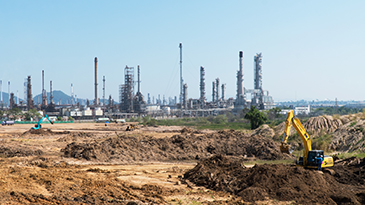I recently had the pleasure of participating in a panel discussion during the NVIDIA Conference. The panel included Vishal Mehta (Sr. Digital Group Director, Worley), Art Parkinson (Project Manager, Worley), Ahsan Yousufzai (Global Business Development, NVIDIA), and me. We had a lively and thoughtful conversation around the importance of executing and delivering on sustainable decarbonization projects. Specifically, we discussed how the metaverse (virtual reality) is being used for Capital project execution and delivery. However, I was surprised when my favorite part of the discussion was about how the metaverse is a key factor in attracting and retaining the next generation of engineers into our industry.
The focus of the discussion was on the Gigastack Project – led by a consortium including ITM Power, Orsted, Phillips 66, and Element Energy – a flagship, technologically advanced large-scale renewable hydrogen project. Worley assisted Phillips 66 with the front-end engineering for a 100MW green hydrogen plant integrating into the Humber Refinery. Execution of this project began in the summer of 2020 during the early days of COVID by Worley, which required collaboration across multiple offices on multiple continents with remote workers.
Worley used Aspen OptiPlant(R) to develop the early layouts, especially to study the size and location of the electrolyzers within the existing refinery. I had frequent discussions with the users at the time, and I was excited to hear they were leveraging the Aspen OptiPlant 3D models for a virtual walkthrough between partners in Houston and the UK. Having worked in the 3D generative design and visualization world for close to three decades, I am excited about the opportunities with immersive reality solutions.
There are critics who accurately question the value of this technology specifically, or the metaverse entirely, in Engineering. It’s considered “eye-candy” and “pretty” but of no real value and I agree we can’t simply build tech because it’s trendy; it needs to add value. I had the same discussions more than 15 years ago, when discussing the value of an intelligent 3D layout over static 2D drawings. Initially, it was considered a pretty picture only; it took more than a decade to demonstrate the value that an intelligent, data-rich 3D model can bring to project accuracy and scheduling. Once a group of engineers could query the model, make decisions on equipment selection, check for operations and safety, start planning out construction activities and more is when the ‘pretty’ picture’s real value came into focus. These type of discussions and decisions simply could not be done in a 2D flat environment without associated data. More importantly, it’s the improvements in the engineering of the design and the reduction of the overall costs of the assets, that ultimately won over the critics. In the same way, immersive reality can add context and additional dimensions of understanding such as cost, schedules, operations, and a collaborative environment that empowers each type of user to make better decisions.
This led into our discussion of the next generation of engineers and how we attract them to an industry, considered old and not sustainable. The next group of innovators will not be familiar with 2D drawings and will be very comfortable with 3D and VR, which is based on their current gaming, social media and technology experiences. They will expect data instantly and, they will expect this data to be accurate. They will be creative in exploring options and they will want to see the impact of their designs on people, resources and the climate. This environment must be dynamic. Users should be able to simulate ‘what if’ conditions and determine the impact. This type of environment – the metaverse – will allow users to truly evaluate each condition and outcomes and make the best decisions.
The metaverse is here and the next generation will be eager to be immersed as they design, engineer and operate the future industrial facilities.
.png?h=250&w=975&la=en&hash=91A1992C758869AB151AE02404E9154F)

.png?h=415&w=675&la=en&hash=67AE38BE6D0AB947DE965378B0A2306E)



Leave A Comment